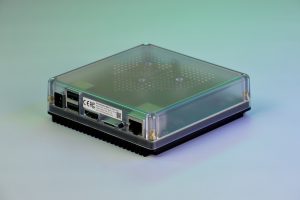So, rather than starting with Smart Locks, I’m starting with the concept of digital locks in general. I’ll get to smart locks in a subsequent post.
What are Digital Locks?
The term can be somewhat confusing, because a digital lock is not necessarily electronic, it can be mechanical. It refers to a lock that is opened using a combination keypad over a key. Some people still prefer a mechanical digital lock. Why?
- Electronic deadbolts are usually battery powered…what happens when the battery dies?
- They often contain a motor to turn the bolt, and this part can wear out or otherwise over time meaning more frequent replacement.
- Mechanical Options are also popular with Observant Jews as they would refrain from using electronic devices on Saturdays and holidays.
A digital lock replaces something you have…a key, with something you know…a code, although many of these locks still offer a key override. But this is nothing new. For years, one of the entries to my building has been through a garage, with a keypad on the outside to open it. More and more people are moving to locks that don’t require a traditional key for at least one entry into their home. In my follow-up where I get into Smart Lock technology, these do not just include built-in keypads, but using your phone to unlock, fingerprint, etc.
Digital locks have also become increasingly popular for short term rentals, such as AirBnB, as providing a code is easier than key exchange, and changing the code is a trivial matter. The Smart digital locks allow remote changing of the code and the others allow changing at the unit itself.
Are Digital Locks Safer than Keyed Locks?
The traditional keyed lock itself is inherently risky in itself. An expert lock-picker can pick a lock rather quickly. It is possible the absence of a key may actually be more secure, because there is nothing to pick.
But all this doesn’t mean you can’t bypass a digital lock in the same way most people bypass keyed locks, it just means you can’t do it with a pick. In most cases, the biggest security of a lock, is not the key. Most criminals are more likely to use brute force to break in over picking the lock. So, a key question in any lock purchase is hard it is to brute force it. For example, Consumer Reports tests their door locks with a 100 pound steel battering ram, and test both with and without a reinforced box strike plate. Their recommendation, by the way is to invest in reinforcing against a brute force attack as well as a hardened lock that is not easy to drill or otherwise break.
Again, that doesn’t mean a determined individual can’t get in. Security is often about making things harder, not impossible.

 by Daniel Chen (https://unsplash.com/@dchestudio)
by Daniel Chen (https://unsplash.com/@dchestudio) by Annie Spratt (https://unsplash.com/@anniespratt)
by Annie Spratt (https://unsplash.com/@anniespratt)



